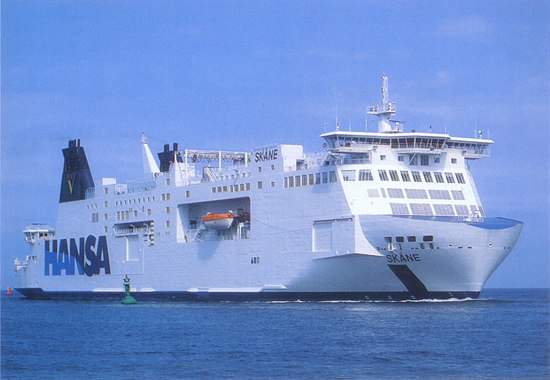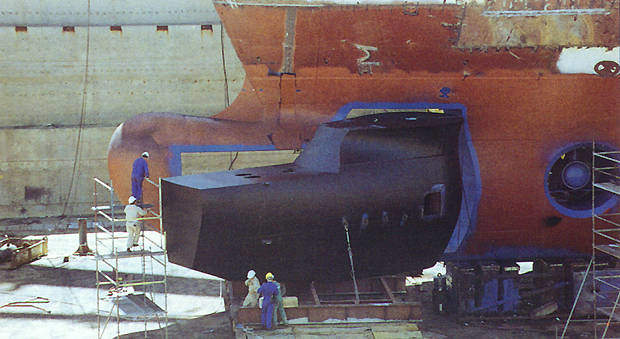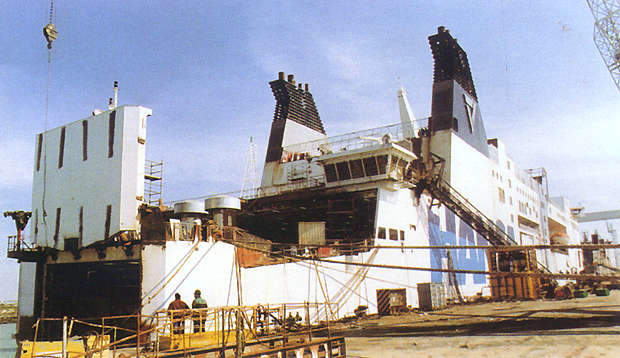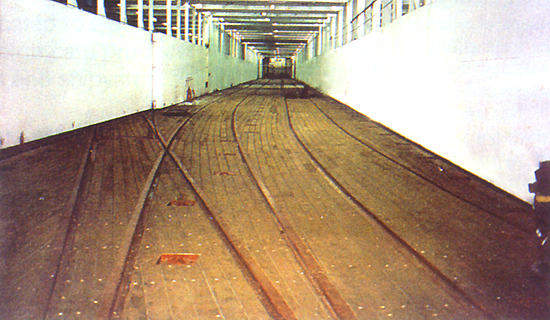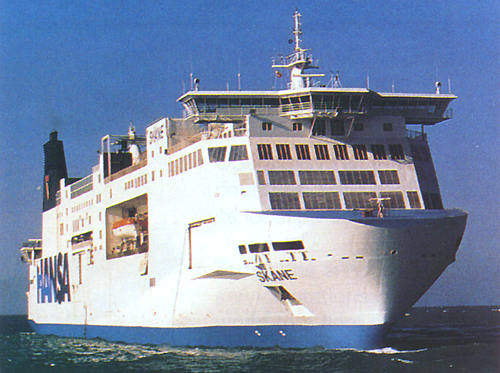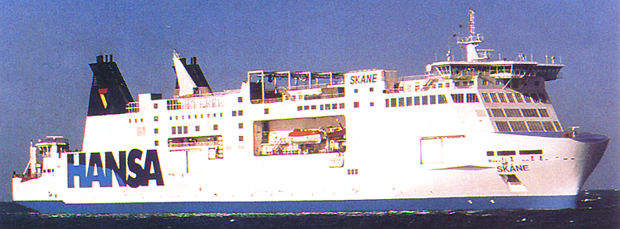The Skåne is the world’s largest multipurpose ro-ro/train ferry. It is operated by Scandlines AB on the Baltic crossing between Rostock (Germany) and Trelleborg (Sweden). A turnaround time of 75 minutes and a service speed of 21 knots enables the ferry to complete five round-trips each day. The Skåne was built in 1998 by Izar of Spain, at the Puerto Real shipyard.
DESIGN
The Skåne has an overall length of 200m and a moulded breadth of 29.6m, with a depth of 29.6m and a moulded draught of 6.2m. Its gross tonnage is 42,800t and it has a deadweight of 7,920t. The ro-ro ferry is able to carry 600 passengers, up to 2,630t of vehicles and 3,330t of freight trains, still maintaining a service speed of 21 knots.
A roll, heel and trim control system comprises two retractable stabilising fins, a heeling system for use in harbour and a trimming system with a pump capacity of about 2,400t/h. Manoeuvrability is a priority because of the vessel’s size and the restricted access at Trelleborg, where it must be reversed down a long narrow channel. The vessel, therefore, has three transverse thrusters and a rudder located at the bow, while a duplicate navigation bridge is fitted aft for this purpose.
FACILITIES
Train, trailer and vehicle handling is carried out from Decks 2 to 7. Deck 2 contains 204m of train track and 204m of lanes for trailers. The main train transportation area is Deck 3, which has 916m of track and 1,011m of lane area for trailers. The lower trailer deck, Deck 5, has 1,162m of trailer lanes. The upper trailer deck, Deck 7, has 918m of space for trailers.
Pairs of longitudinal MacGregor flood control doors are fitted at the train-deck level, fore and aft of the bulkheads. Powered by hydraulic motors and chains, these can be slid out of the way alongside the casing, leaving a 10.5m clear space forward for road vehicles to turn through 180°.
The six rail tracks on the main deck are loaded over a linkspan at quay level through a threshold closed by a vertically sliding portcullis door. Access to the lower level is by a massive twin-track lift with a platform 104m long (some 55% of the ship’s bp length) and with a lifting capacity of 816t. The vessel has two decks for road vehicles above the track decks on the main deck and tank-top levels.
Accommodation for 600 passengers is provided in 150 passenger cabins, 40 of which are outside doubles, with 103 inside doubles. Other facilities include a health club with sauna area, cinema, lounge, cafeteria, children’s playroom, bar and duty-free shopping area.
PROPULSION
The propulsion system comprises two pairs of MAN B&W 8L48/60 medium-speed engines, each with a 7,240kW (9,705bhp) rating at 450rpm. The two shaftlines, each designed for 14,480kW (19,410bhp) connect to two CP propellers. Main engines, clutches, propeller pitch and thrusters are controlled remotely from the bridge. An integrated alarm monitoring and control system (IAMCS) includes fire detection systems in the engine room, cargo and accommodation spaces. Also on-board is a fuel optimising system and a MIP calculator for the propulsion and auxiliary engines.
AUTOMATION AND CONTROL
The forward bridge layout and equipment includes: two ARPA radars, decking information system, navigation information, display gyro compass, adaptive autopilot, navigation and track keeping system, an echo sounder and a magnetic compass.
Advanced communications systems meet the GMDSS standard for area Al. The vessel’s integrated internal communications system incorporates the public address system, a 300-line automatic telephone network, a paging system and wake-up alarms for the cabins.

